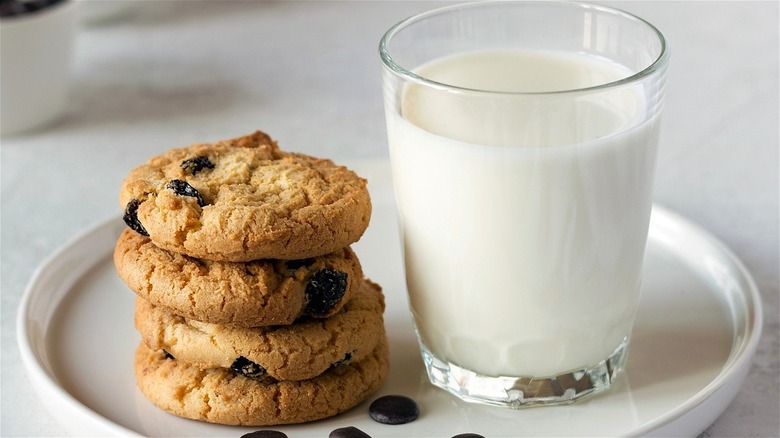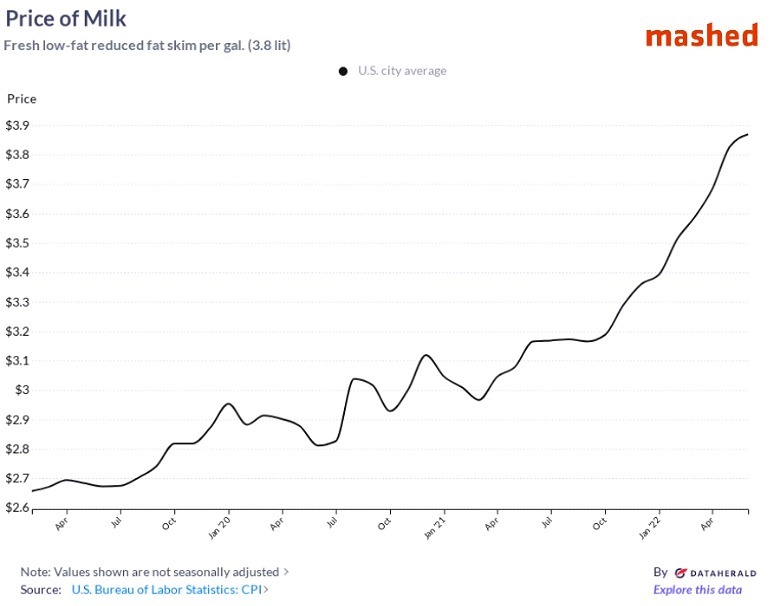Here's How Expensive Milk Has Become With Inflation
The rising inflation rate in the United States has taken a toll on consumer spending habits with steady month-to-month increases since February of last year (via AP News).
While you may not have the ability to compare your most purchased items in 2022 with last year's costs, your current lack of usual funds might provide the answer, especially if you consume a considerable amount of animal products. Not only have the increased costs of meat and dairy affected grocery bills, but the rising price of eggs, with April alone seeing a 23% increase in 12-pack cartons, has taken a toll on anyone who cares about having that perfect protein on their morning plate (per Bloomberg).
With a 15% standard increase in most meat prices at the start of this year, people may be saying goodbye to their beloved steaks too, and opting for chicken due to a slower price climb (via Progressive Farmer).
You may have been too sidetracked to notice the price of your daily milk has been climbing that proverbial cost ladder as well.
Milk could be bad for your wallet
According to data accrued by the U.S. Bureau of Labor Statistics (BLS), the average price for a gallon of skim milk went from $2.65 in February 2019 to $3.51 in February 2022 which is a 32% increase over 3 years. Yet when you look at the last consecutive year alone when comparing June of 2021 with an average price of $3.16 to June of this year with the average being $3.86 that results in a whopping 22% increase in just 12 months.
While you do need milk to make that perfect mac and cheese, you may want to consider how much milk you're buying if you're trying to cut costs. Not only that but when you buy a gallon of milk, it's difficult to picture all the work that goes into keeping that farm-fresh milk flowing.
According to The Washington Examiner, the cost of energy to run American farms is at an all-time high, increasing to a hefty 27% when compared to last year. The cost of fertilizer has risen roughly 30% since the start of 2022 with the cost of livestock feed also climbing, which leaves some farmers no other choice but to close down their operations (via Drovers). The next time you grab a new gallon, pay not only with your hard-earned dollars but also with your respects for the hardworking farmers that made it available for purchase.

